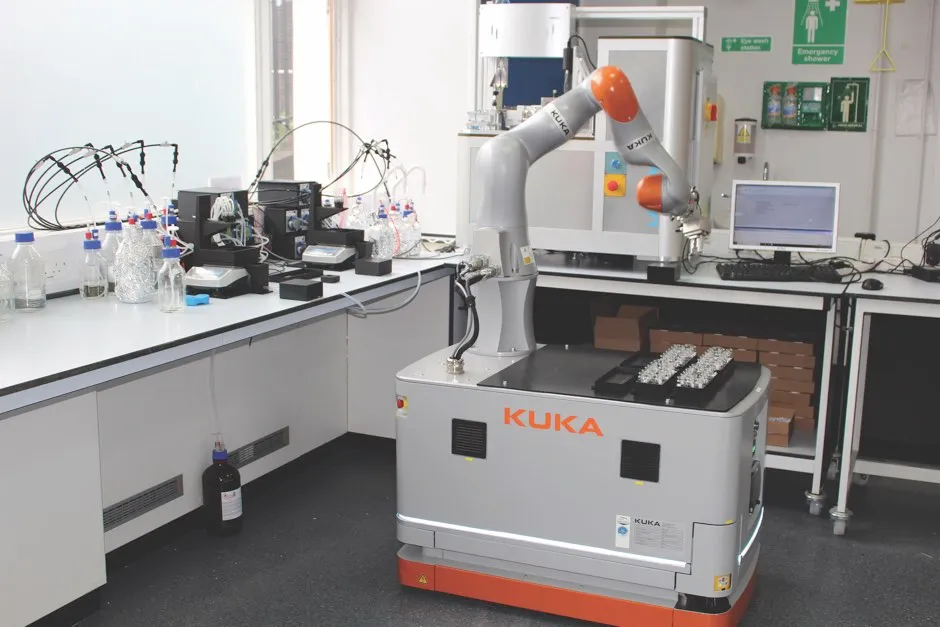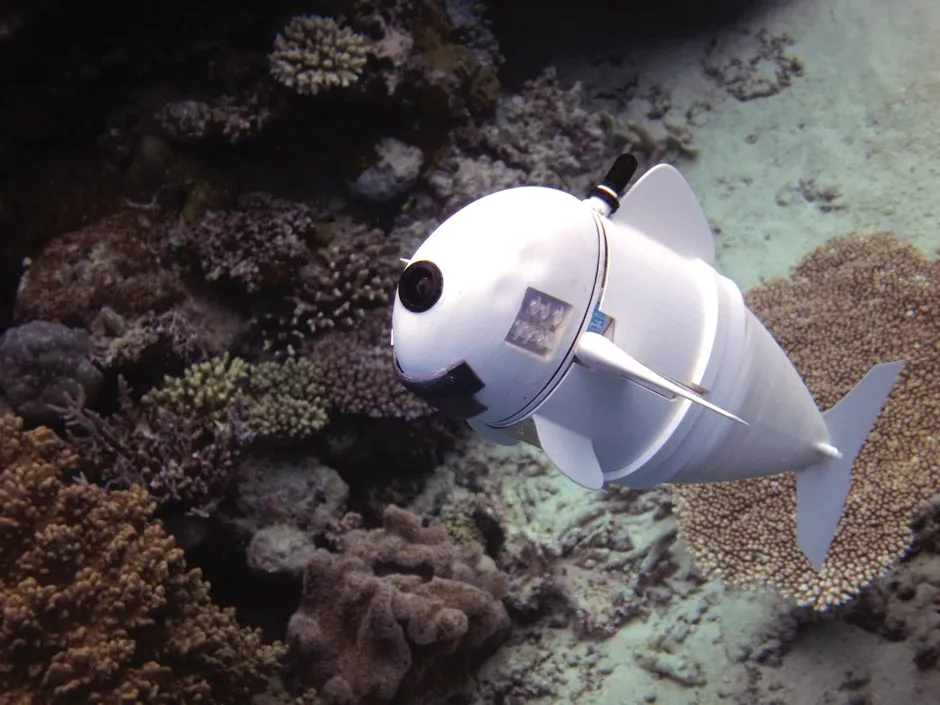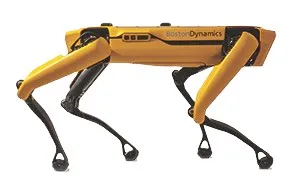When a team at the University of Liverpool set out to find a new chemical catalyst that could speed up the extraction of hydrogen from water – an area of research that has implications for green energy and other industries such as hydrogen-powered cars – they knew they were looking at a lot of work.
There were millions of possible experiments to run in their search, so they wanted to find an alternative way of doing things. And what could be better than a robot chemist?
“Our motivation was to make what is a complex process autonomous,” explains Prof Andrew Cooper, who led the development of the robot chemist.
Read more about robots:
- Where does the word 'robot' come from?
- 'World-first' socially assistive robot under development in Scotland
- What if robots took our jobs?
The robot was created from a KUKA Mobile Robot. It has access to a map of the laboratory to allow it to move through the space safely, and its speed is capped at 0.5 metres per second.
To navigate, it uses a combination of laser scanning – similar to the LIDAR system used by driverless cars – and touch-feedback, meaning it can operate in the dark. In fact, the robot can work seven days a week for 21.5 hours a day, only pausing to charge its battery.
While the robot’s arm can carry up to 14kg, the catalyst experiments used much lighter equipment.

“A rack of filled vials has a mass of 580g,” write the researchers in the paper, “but [the payload capacity] could allow for manipulations such as opening and closing the doors of certain equipment.”
After being set basic parameters by the researchers, the robot was left to choose between the 98 million possible candidate experiments, choosing which ones to carry out based on the results of the previous ones.
In just eight days it completed 688 different experiments, and found new photocatalyst mixtures that were six times more active than the scientists’ initial formulations.
It takes one day to set up the robot, and it can then do 1,000 experiments by itself
Prof Andrew Cooper
“Previously, we were doing one photocatalysis experiment per day, by hand,” says Cooper. “Now, it takes one day to set up the robot, and it can then do 1,000 experiments by itself – or conceivably more if we gave it more consumables.”
Its human-sized dimensions mean it can fit into pre-existing lab spaces without the need for lowering desks or adjusting equipment, but the researchers have not designed the robot to replace real scientists. Instead, Cooper says humans and robots can collaborate on tasks, particularly when automating an entire production process would be too expensive.
A robot chemist is no cheaper than a salaried human, either. “Mobile robots of this kind cost between £50,000 and £150,000, depending on their capabilities,” says Cooper. “This might sound expensive, but for context, the gas chromatograph – a common instrument in chemistry research used to measure hydrogen production – falls in the same range. It is also not uncommon for chemistry labs to have equipment that costs upwards of £500,000.”
Cooper’s next step is to make the robot smarter. “In the example we published, the robot has no concept of what the chemistry is – it could equally be baking the perfect cake. In the future, we want to put a chemical brain in the robot. That is, so that it can make decisions that are based on the chemical inputs as well as the measurement outputs.”
More robot helpers
SoFi Robotic Fish

A team at the Massachusetts Institute of Technology built a robot that mimics the movements of real fish, swimming alongside marine animals to give researchers an eye under the sea.
SlothBot

Named for its slow pace, low energy requirements and position in the trees, the SlothBot aids conservation research by monitoring animals and plants in the Atlanta Botanical Garden.
Spot

The Spot robot can be found down mines, on construction sites, in healthcare, and even performing with Cirque du Soleil. Nimble, adaptable, autonomous: it’s a researcher’s best friend.
- This article was first published in issue 353 of BBC Science Focus - find out how to subscribe here
